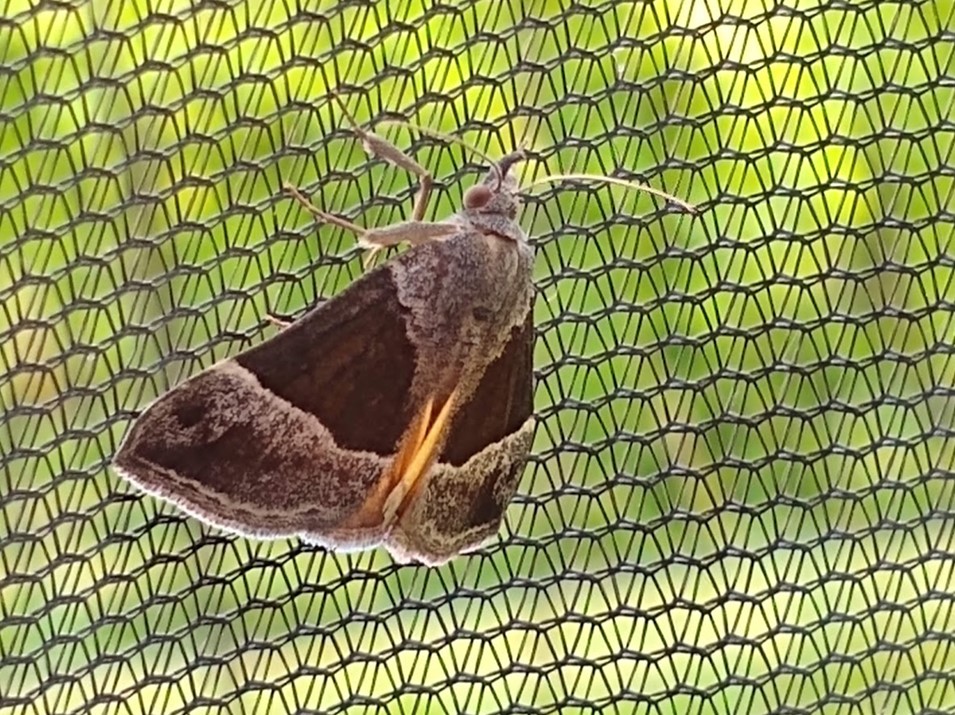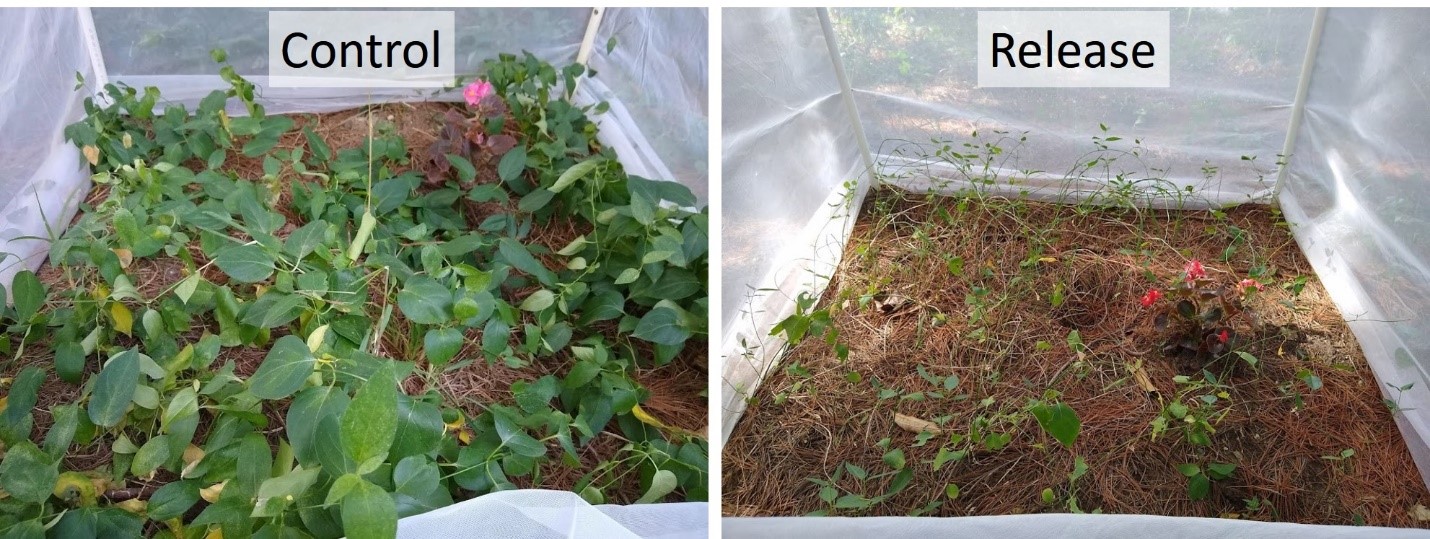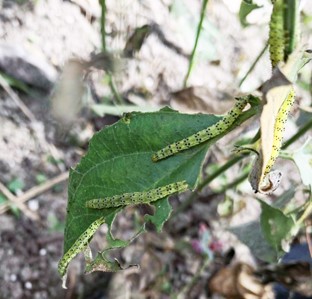Biological control of invasive swallow-wort vines in Michigan
A defoliating moth from eastern Europe may be the solution for long-term control of invasive vines that disrupt native plant and animal communities, including monarch butterflies.

Swallow-wort vines, also known as dog-strangling vines, were brought to the United States as ornamental plants in the 1800s and are related to our native milkweeds. However, their moderately aggressive growth habit and their potential to disrupt the life cycle of the monarch butterfly have turned them into plants of concern across eastern North America. When monarch butterflies lay their eggs on swallow-wort vines, the larvae that hatch and attempt to feed on these plants all end up dying. According to 2014 research from Cassagrande and Dacey, it is estimated that up to 25% of monarch eggs may be laid on swallow-wort in areas where the vines are abundant, resulting in this grim fate, potentially contributing to already declining monarch butterfly populations.
In addition to concerns about its impact on monarch butterflies, swallow-wort can disrupt diverse native plant, bird and other arthropod communities when it forms dense monocultures. There are two species of swallow-wort present in Michigan: pale swallow-wort (Vincetoxicum rossicum) and black swallow-wort (Vincetoxicum nigrum), both native to Europe. We know that in Michigan, swallow-wort vines are present in at least 27 counties where they inhabit forested areas along hiking trails, roadsides, home gardens and agricultural areas. Dense stands of swallow-wort vines can be difficult to remove without repeated herbicide applications, treatments that can be expensive and hard to apply without damaging non-target plants.
For a difficult-to-manage plant like swallow-wort, biological control is a safe and potentially effective alternative to herbicides. Biological control agents are natural enemies that come from the same region as the target species. They go through an extensive host-specificity testing process before being approved for release. This testing is conducted to ensure the biocontrol agents will not damage economically important or native and endangered species.
The biological control agent Hypena opulenta, a defoliating moth, was first approved for release in the U.S. in 2017 to control swallow-wort vines by the United States Department of Agriculture (USDA). This moth originates from the native range of swallow-wort in Ukraine and is a specialist that is adapted to feed on swallow-worts, unlike monarch butterflies. In its larval stage, Hypena opulenta feeds on the leaves of swallow-wort, weakening the plants, reducing seed production, and as a result potentially reducing swallow-wort populations.

We have observed full defoliation of swallow-wort plants by Hypena opulenta in experimental cages on the Michigan State University campus (see photo below), and we have conducted the first field releases of this natural enemy in Michigan in summer 2020. Over 400 adult moths were released at 18 different locations in Oakland County, which is considered to be a swallow-wort hot spot. Larvae were observed after releases feeding on swallow-wort plants, but we have to wait until spring 2021 to confirm establishment success.

Similar efforts to establish Hypena opulenta are ongoing in several eastern states and have already been successful in Canada. It will likely take years for this new moth species to build up populations large enough to have a measurable impact on swallow-wort infestations in Michigan. In the meantime, we will continue monitoring how well its life cycle is synchronized with the climate of Michigan, what factors may aid its establishment in different regions, and at what densities it will have an impact on swallow-wort infestations.

Further releases are planned for summer of 2021 on black swallow-wort infestations west of Lansing, Michigan, and in the Petoskey, Michigan, area.
If you have a dense swallow-wort infestation of at least 0.25 acre on your property, please email swallowwort.biocontrol@gmail.com to inquire about biological control options.
This research is funded by the Department of Entomology at Michigan State University, the Michigan Invasive Species Grant Program of the Michigan Department of Natural Resources, the Sustainable Michigan Endowed Project, and the C.S. Mott Predoctoral Fellowship in Sustainable Agriculture at Michigan State University. Thanks to Julianna Wilson for suggested edits on an earlier version of this article.



 Print
Print Email
Email

